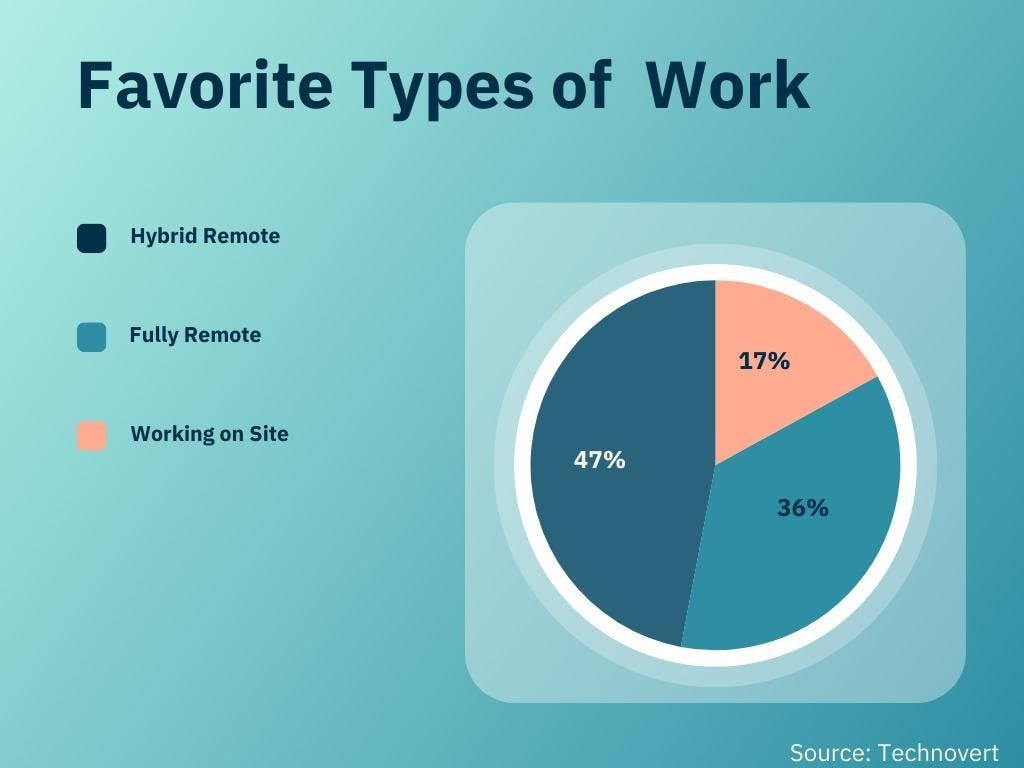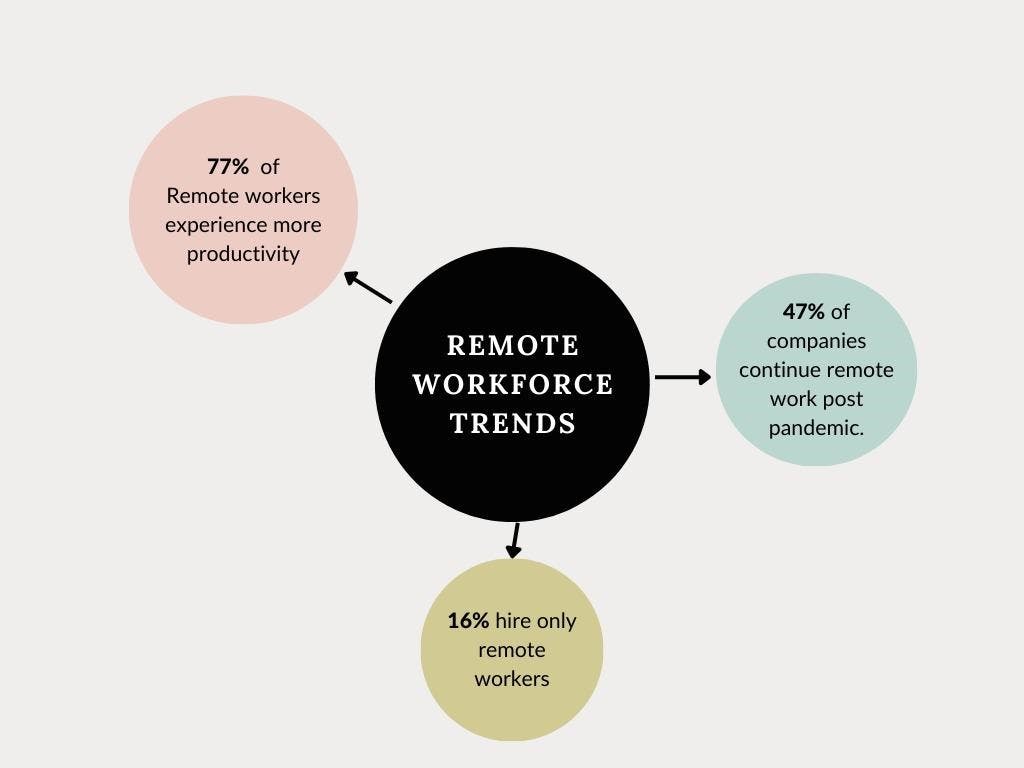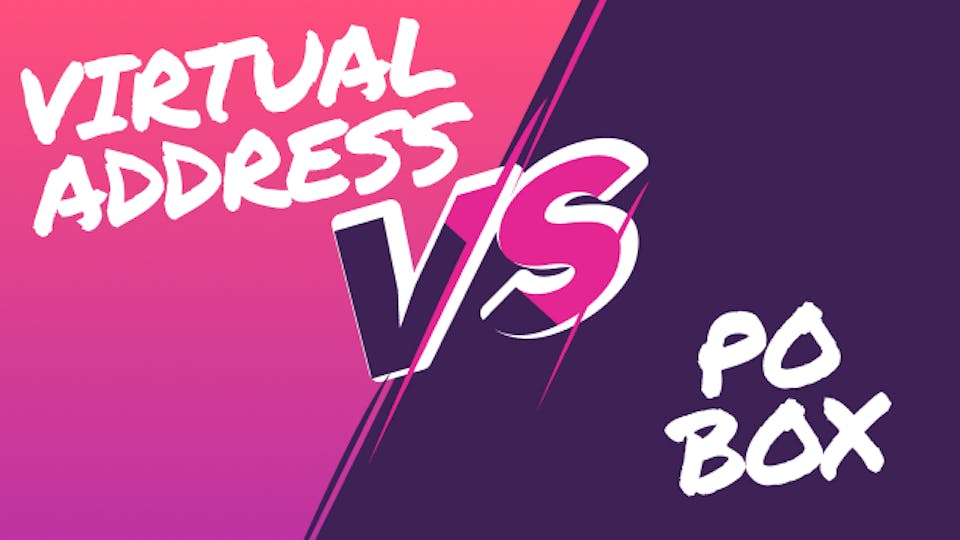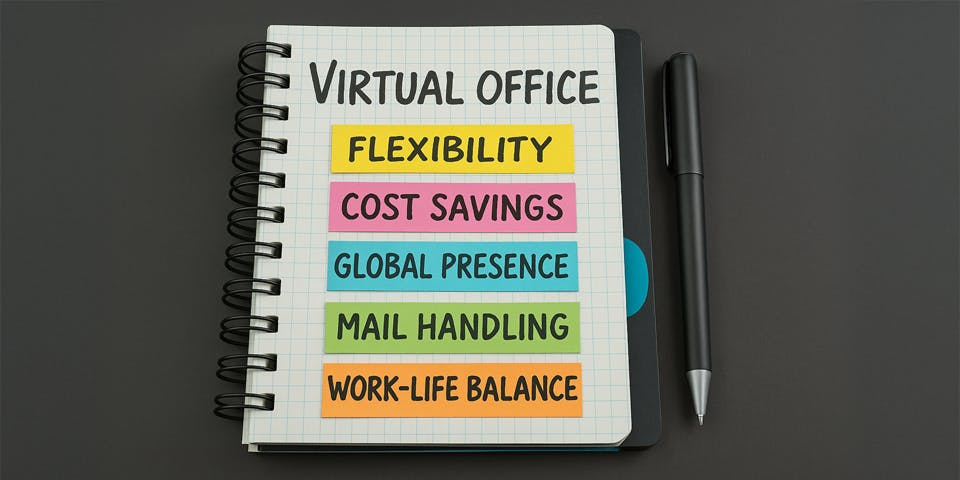15 February, 2024
Remote vs Hybrid vs On-site: What Work Model is the Most Efficient?
Table of Contents
During the COVID-19 pandemic, digital spaces transformed the way people worked. In the traditional office-centred landscape, remote work is fast becoming a new normal — even some CEOs are fielding Zoom calls and emails from home full-time now.

With the pandemic over, many workers and team leaders are still working remotely. Yet, this hasn't been without controversy. HR professionals and managers are concerned about how remote work impacts productivity. Despite the new work opportunities, there are also legal and insurance implications for employees and equipment based outside the office, particularly if they're located in a different country.
This has sparked a wider discussion on remote vs hybrid vs office business models: should employees return to on-site roles or at least adopt a hybrid working model? Or is remote work here to stay? Find out answers to these questions further in the article.
Remote vs Hybrid vs Offline: What the Research Says
Human Resources, CEOs, and line managers can set their minds at rest: the research bears out that there's no impact on efficiency: a remote team is at least as productive as on-site employees.
Researchers like Jose Maria Barrero have done detailed studies into working from home since the 2020 pandemic and discovered around a 5% boost in productivity due to the combination of working arrangements. According to Barrero, the reason this subject continues to divide opinion is that traditional ways of measuring productivity don't take into account new WFH (work-from-home) arrangements, like the time saved from not having to commute.
This may explain why, according to research from Owl Labs, 62% of workers feel more productive when working remotely. The same research shows that 47% of companies have maintained this adaptability by offering remote work post-pandemic. An astonishing 16% of companies worldwide now only hire remote workers.

When it comes to hybrid work, according to data gathered by productivity app Desktime, hybrid workers are also slightly more productive than those who are fully remote. Additionally, engagement is highest in companies which allow employees to work 3–4 days remotely. When asked to pick their favourite type of work, 47% of respondents said they preferred hybrid, making it the most popular after fully remote work (36%) and working on-site (17%).
Given the popularity of working from home with employees and increased productivity, there's not much data in favour of on-site work.
Although only 20% of workers report that they'd rather work from the office full-time, Artis Rozentals, the CEO of Desktime, cautions that the extra productivity boost from remote employees may come from them working the extra time it takes them to commute to and from work. This can lead to employee burnout, so it could be counterproductive in the long term. Research into this aspect of on-site vs hybrid vs remote work is ongoing.
On-site, Hybrid, or Completely Remote: Pros and Cons
Given that the research is open to interpretation, the best approach for any employer, manager, or worker is to review the data and then weigh up the pros and cons of different working models.
On-site
On-site jobs are those that require employees to be in the office to fulfil their daily duties. Naturally, there are some roles like nurses, corrections officers, and caregivers that have to be carried out in person.
One of the major benefits of on-site work is that workers can communicate easily face to face and work together on projects, as well as tackle problems. Less experienced workers can also be more easily monitored and mentored by more experienced employees.
Although flexitime contracts exist, the work policy for most on-site employees is a fixed schedule. This provides an easy separation between work and home life but can make life more difficult for workers with other commitments like pets and children. This may be one of the reasons why employees prefer not to work in the office full time if given the choice, especially considering the additional time and money spent on commuting.
Pros:
- Face-to-face meetings
- Fosters innovation
- Better employee bonding
- Easy to monitor productivity
Cons:
- Less popular with employees
- Fixed working hours
- Maintenance costs
- Commute time
Hybrid
Allowing employees to spend some time at the office and some at home is certainly the most popular option. There's also some data to suggest this can make for more productive employees, though this may be due to them using the extra hours saved in commuting each day to work, which could lead to dissatisfaction and burnout.
Widening the list of potential employees to anywhere in the world will undoubtedly provide a deeper talent pool. Still, this means potentially coordinating meetings with hybrid teams across multiple time zones. CEOs are also unlikely to reduce company maintenance costs by adopting a hybrid working model, given that the office will still need to be heated and lit several days a week.
Pros:
- More popular with workers
- Reduced maintenance costs
- Better productivity
- Face-to-face interactions are still possible
Cons:
- Scheduling difficulties
- Hard to maintain a company culture
- Risk of burnout
- Still requires a physical office
Remote
Companies around the world that fall into the 16% of those which only hire remote employees have a big advantage in that they can save on the expense of renting and maintaining an office building. No office also means that employees are spared the time and cost of commuting to work each day. This, in turn, opens up the possibility of more flexible working hours, allowing them to strike a better work/life balance.
Whether this is right for any given company depends on how that balance is maintained. The home can be full of distractions like streaming TV, pets, and children, which can reduce employees' concentration. It's also extremely difficult for line managers to monitor workers in their own homes. Managers can also provide employees access to online collaboration tools like Slack, but this is unlikely to be as simple or effective as meeting in person to work on projects.
Pros:
- Flexibility for work schedules
- No commute expenses
- No need for a physical office
- Better work/life balance for employees
Cons:
- Collaboration more difficult
- Hard to build a company culture
- Difficult to monitor employees
- In-home distractions

How The Hoxton Mix Can Help
At the Hoxton Mix, we're passionate about helping businesses thrive. Just because you've made the choice to employ only remote workers doesn't mean that you can't have an impressive London business address, which can be registered with Companies House. This way, you will keep your home address private, meaning if someone's examining public company records, they won't be able to tell the address from where you or your employees are working remotely.
Having a central London location to use as your registered office address with The Hoxton Mix starts at £0.41p per day, saving you thousands on maintaining your own building. If you and your workers prefer a hybrid business model, The Hoxton Mix is also here to help with events, conferences, and training sessions. Our meeting rooms can be booked by the hour, so you only pay for workspaces as and when you need them.
Some of your remote workers may be based outside the UK, and there's no reason why customers need to pay international call charges. Simply sign up for a 020 London number through The Hoxton Mix and have calls diverted to any UK mobile or EU/US/UK landline.
Additionally, The Hoxton Mix's mail handling services give you the flexibility to work from anywhere. With our Virtual Office London plan, all your mail is scanned and emailed to you the same day it arrives. You can also collect it at your convenience within 30 days, or choose to have individual items forwarded across the UK.
Final Thoughts
Overall, it's plain to see that the landscape for work has undergone a seismic shift. Businesses didn't have much choice in going remote/hybrid during the pandemic. But post-Covid, the employees have spoken: They considered remote vs hybrid vs on-site and overwhelmingly favoured the first two work models. While employee satisfaction is important, remote work also comes with other benefits, including widening the talent pool and saving costs compared to maintaining a brick-and-mortar office.
Still, each employer, manager, and worker has to make their own decision about whether in-office, remote, or hybrid works best for them and their company. This choice should be based on a careful consideration of the data and a weighing of the pros. But we can say that it's likely that the number of companies around the world that work entirely remotely will only grow in the future.
As more businesses make the transition, solutions like those offered by The Hoxton Mix will play a crucial role in this future work landscape. For those companies who do adopt a fully remote setup or a hybrid model, having a virtual London office address, mail forwarding services, and meeting rooms for hire can address some challenges associated with these work models.
FAQ
What is the difference between on-site, hybrid, and remote work models?
Remote work allows all employees to work from any location. Hybrid work models combine remote work with spending at least some time at the office. On-site work requires that employees be physically present in the office every day. Hybrid and remote work remain the most popular models with employees.
Is hybrid work more productive than fully remote?
The debates continue over whether on-site, full remote, or hybrid is best. Research suggests hybrid workers may be marginally more productive (around 5%). This may be due to striking a good balance between employee interaction and remote focus. It also may simply be because employees use the time saved commuting to do more work. Traditional methods for measuring productivity aren't always useful with hybrid or remote work models.
Why should companies consider transitioning to fully remote/hybrid models?
The main reason to allow remote/hybrid work in your company is that it increases employee satisfaction. Beyond work preferences, you can also save on the costs of renting and lighting a brick-and-mortar office. The Hoxton Mix's solutions ease the transition for remote, hybrid, and on-site businesses exploring these work models.
How does the virtual business address support companies that adopt a hybrid or fully remote model?
The Hoxton Mix offers virtual London office addresses, mail forwarding services, and flexible meeting rooms for hire. If your company has gone fully remote, these services help businesses maintain a professional image and facilitate collaboration. If you still have physical premises, we can also help you transition from hybrid to fully remote.
Can employees and companies based outside the UK benefit from The Hoxton Mix's services?
Absolutely! Our virtual office address can be used to register a UK business with Companies House. The Hoxton Mix also provides services like call forwarding with 020 London numbers, easily connecting remote workers with customers without any international charges.
Hand-picked related articles

London
Virtual Office
Mail Management






